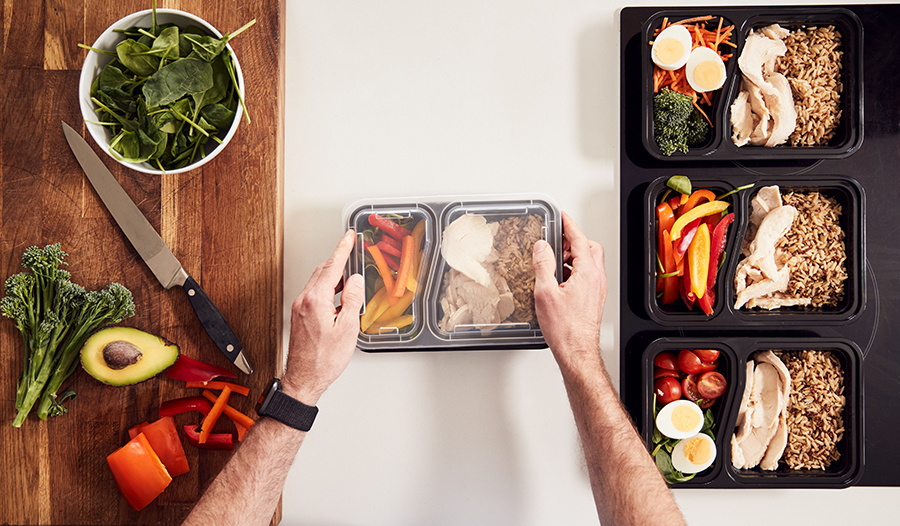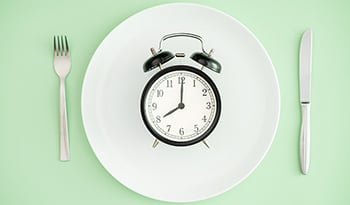Discovering the Dukan Diet: Benefits, Phases, Foods, Safety, and More
ESONERO DI RESPONSABILITÀ:Questo blog non intende fornire diagnosi...
- In this article:
- Dukan Diet Phases
- Attack Phase
- Dukan Diet Foods
- Cruise Phase
- Consolidation Phase
- Stabilization Phase
- Dukan Diet Menu
- 100 Allowed Foods
- Dukan Diet Effectiveness, Concerns, + Safety
- Who Should Try the Dukan Diet?

The Dukan Diet, a high-protein, low-carbohydrate, low-fat diet, was designed in the 1970s by Pierre Dukan, a former French physician and self-proclaimed nutritionist. The diet consists of four phases, during which people following the diet can eat as much of the “allowed” foods as they want. The highly restrictive diet focuses on whole rather than processed foods and encourages daily physical activity. Research suggests high-protein diets like the Dukan Diet are effective for weight management, but they may pose long-term health risks and may not be sustainable.
This article gives an overview of the Dukan Diet, whether it’s effective, and discusses the potential risks of following the diet.
Dukan Diet Phases
There are four phases of the Dukan Diet:1
- Attack
- Cruise
- Consolidation
- Stabilization
Attack Phase
The first phase of the Dukan Diet is the Attack phase, also known as the Pure Protein phase. According to the diet, this phase intends to “jump start” weight management and lasts between two to seven days, depending on the person’s age, goal weight, and how much dieting they have done in the past. The Attack phase is a high-protein, low-carbohydrate, low-fat, ketogenic diet.
Except for a small amount of oat bran eaten daily, no carbohydrates—including fruits or vegetables—are allowed during this first phase.
Dukan Diet Foods
A person following the Dukan Diet can eat an unlimited amount of 68 high-protein foods. These foods include:
- beef (roasts or grilled items only, and not fatty cuts such as ribs)
- veal (cutlets, roast, or well-trimmed chops)
- buffalo
- venison
- chicken
- turkey
- other lean poultry
- fish
- shellfish
- eggs
- tofu
In addition to eating only these lean proteins, people in the Attack phase of the diet consume 1.5 tablespoons of oat bran and should engage in moderate exercise daily.1 People following the Attack phase may also consume shirataki noodles, wheat gluten, and up to 1 tablespoon of goji berries.
Cruise Phase
The second phase of the diet, known as the Cruise phase, lasts as long as it takes to reach a person’s weight management goal. The diet estimates that this will take three days for each pound of weight loss desired.
During the Cruise phase, people on the diet are recommended to alternate days when they eat only foods allowed during the Attack phase with days that include both the 68 lean proteins plus 32 non-starchy vegetables. On days with both protein and vegetables, people on the diet may eat as much as desired of the allowed lean proteins and vegetables.
The 32 non-starchy vegetables allowed during the Cruise phase include:
- artichoke
- asparagus
- beets
- broccoli
- carrots
- celery
- cucumber
- eggplant
- lettuce
- mushrooms
- onions
- peppers
- spinach
- tomatoes
- zucchini
During this phase, no starchy vegetables like potatoes or corn are allowed. On protein and vegetable days, people following phase two of the diet may also add in olive oil and up to 2 tablespoons of goji berries. During the Cruise phase, people following the diet should eat 2 tablespoons of oat bran and walk briskly for 30 minutes daily.
This phase continues until the person following the diet has reached their goal weight.
Consolidation Phase
The third stage of the diet, known as the Consolidation phase, is designed to prevent regaining back weight lost during the first two phases. The Consolidation phase lasts five days for every pound lost, according to the diet. During the two steps of this phase, previously restricted foods are gradually added back in a specified order.
Foods added back during the Consolidation phase include:
- 1 to 2 servings of fruit (excluding bananas, grapes, figs, or cherries)
- 2 slices whole grain bread
- 1.5 ounces hard rind cheese
- 1 to 2 servings of starchy foods weekly
- 1 to 2 “celebration” meals weekly
People following the diet continue adhering to a Pure Protein day from the Attack phase once a week. They also consume 2 tablespoons of oat brain and engage in 25 minutes of brisk walking daily during this phase. Weekly “celebration” meals consist of one serving each of an appetizer, entrée, dessert, and a glass of wine.
Stabilization Phase
In the final Stabilization phase, people following the diet aim to continue the same habits for the rest of their lives and maintain their goal weight. The three rules of this phase include:
- Consume 3 tablespoons of oat bran daily
- Choose to take the stairs whenever possible
- Adhere to a “Pure Protein” day every Thursday
All other foods are allowed during this phase.
Dukan Diet Menu
The Dukan Diet menu varies based on which phase a person is in. The first phase is a high-protein, low-carbohydrate, low-fat, ketogenic diet. It consists almost entirely of lean protein foods. The second phase adds in non-starchy vegetables, olive oil, and goji berries. The third phase adds complex carbohydrates like whole grain bread and fruits, starchy foods, and hard rind cheese. It also includes a weekly “celebration” meal consisting of one serving each of an appetizer, entrée, dessert, and a glass of wine. The final phase includes all foods without limitation. All four phases also include a daily serving of oat bran.
100 Allowed Foods
The diet identifies 100 foods that are allowed throughout the diet’s phases. These foods consist of 68 lean proteins, including lean meats, poultry, fish, shellfish, vegetarian proteins, fat-free dairy products, and eggs, and 32 non-starchy vegetables, like artichokes, asparagus, broccoli, green beans, lettuce, peppers, spinach, and zucchini. The diet also allows sugar-free gelatin, shirataki, olive oil, goji berries, wheat gluten, and oat bran.
Dukan Diet Effectiveness, Concerns, + Safety
While people who follow the Dukan Diet may lose weight, the restrictive nature of the diet poses some concerns. The first two phases of the diet severely limit what foods are allowed, which can make it difficult for people to meet their nutrient needs.
In one study looking at the nutrient intake of 51 women following the Dukan Diet, the authors found many nutritional abnormalities in women on the diet—animal protein intake was excessive, carbohydrate intake was low, and intake of certain micronutrients like vitamin C and folate intake was insufficient.2
Another concern is the high protein intake of the diet, especially in the first and second phases. Research has also shown that high-protein diets may lead to health complications like cardiovascular disease.2 Eating excessive protein also means the liver and kidneys must work extra hard to process the byproducts of protein metabolism—and there is a limit to how much protein the kidneys can handle. Dukan says drinking a lot of water will solve this problem, but he doesn't provide any scientific references to back this up.
Indeed, in the same study examining the nutrient intake of women on the Dukan Diet, the authors conclude that “Adopting this diet in the long-term may pose health threats through acquiring kidney and liver disease, osteoporosis, and cardiovascular disease.”2
In addition to the nutrition risks posed by the Dukan Diet, the restrictive nature of this and other diets may increase the risk of developing disordered eating.3
Some of the rules of the Dukan Diet are also contradictory. For example, vegetables are restricted to low-starch varieties, but fat-free dairy, which is higher in sugar and carbohydrates, is allowed (up to 32 ounces a day). Dukan brushes aside the milk sugars in these products, saying the number of sugars is too small to worry about. But then he restricts low-starch vegetables, which are even lower in sugars and carbs.
The U.S. Department of Agriculture (USDA) dietary guidelines include calorie recommendations and tips for a healthy, balanced diet. As a high-protein diet that restricts other important food groups like carbohydrates and healthy fats, the Dukan Diet does not meet federal dietary guidelines. Based on the most current research, the USDA recommends 5 1/2 ounces (about 3 cups) of protein foods per day for someone eating a 2,000-calorie diet.4 The Dukan Diet has an entire week of eating only protein followed by alternating days of protein only.
Who Should Try the Dukan Diet?
The Dukan Diet may help effectively manage weight since it restricts calories, carbs, and fats. Additionally, high-protein diets have been shown to promote weight loss by altering levels of specific hormones that regulate hunger and appetite. Therefore, increasing protein intake could help decrease hunger and caloric intake, resulting in weight loss.
However, restrictive diets like the Dukan Diet are typically not healthy or sustainable for long-term weight management. And many of the claims in Dukan’s book are unsubstantiated by science. Instead, consult a registered dietitian who can help create a well-rounded, individualized plan that includes balanced nutrition, regular exercise, adequate sleep, and successful stress management for safe, sustainable weight management.
References:
- Dukan Diet Attack Phase | DukanDiet.com | Accessed 8/10/23
- Wyka J, Malczyk E, Misiarz M, Zołoteńka-Synowiec M, Całyniuk B, Baczyńska S. Assessment of food intakes for women adopting the high protein Dukan diet. Rocz Panstw Zakl Hig. 2015;66(2):137-142.
- Colombarolli MS, de Oliveira J, Cordás TA. Craving for carbs: food craving and disordered eating in low-carb dieters and its association with intermittent fasting. Eat Weight Disord. 2022;27(8):3109-3117.
- Dietary Guidelines for Americans 2020-2025 | USDA | Accessed 8/11/23.

 By Jim White, RDN
By Jim White, RDN


